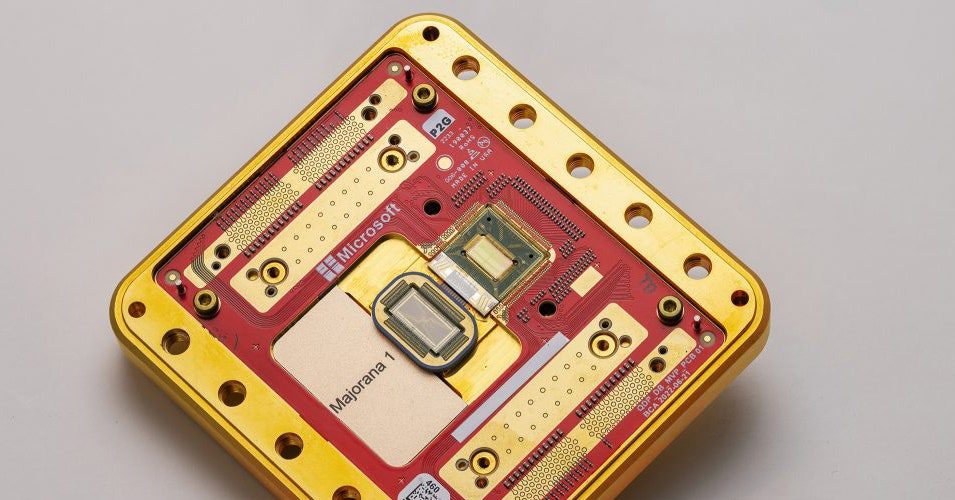
THIS ARTICLE IS republished from The Conversation under a Creative Commons license.
Recently, Microsoft researchers announced the successful development of the first-ever “topological qubits.” This innovative device harnesses an exotic state of matter to store information, marking a potential milestone in the realm of quantum computing.
In conjunction with their announcement, the team also released a study in Nature alongside a “roadmap” outlining future research directions. The design for the Majorana 1 processor is projected to accommodate up to one million qubits, potentially enabling the achievement of critical objectives within quantum computing, including deciphering cryptographic codes and expediting the discovery of new drugs and materials.
Should Microsoft’s claims be validated, the company may surpass rivals like IBM and Google, who are currently considered leaders in the quantum computing race.
Nevertheless, the peer-reviewed Nature article presents only a portion of what has been claimed, and the outlined roadmap indicates numerous obstacles that still need to be addressed. While Microsoft has showcased what appears to be groundbreaking quantum computing hardware, there is yet to be any independent verification of its capabilities. Nonetheless, the developments reported by Microsoft are indeed encouraging.
At this point, you might be curious about several aspects: What exactly is a topological qubit? What is a qubit in general? And what motivates the pursuit of quantum computers?
Challenges in Creating Quantum Bits
The concept of quantum computers first emerged in the 1980s. Unlike traditional computers that utilize bits to store information, quantum computers leverage quantum bits, or qubits.
A standard bit can represent a value of either 0 or 1; however, a quantum bit can encompass a blend of both due to the principles of quantum mechanics. To visualize this, imagine a standard bit as an arrow that can only point up or down, while a qubit can point in any direction, representing a “superposition” of up and down.
This capability allows quantum computers to potentially outperform traditional computers in specific calculations, particularly those involving decryption of codes and simulation of complex natural phenomena.
However, realizing practical qubits poses significant challenges, as external interactions can disrupt the fragile quantum states they embody.
Researchers have explored a variety of technologies to produce qubits, employing methods such as trapping atoms using electric fields or generating currents in superconductors.
Utilizing Fine Wires and Unique Particles
Microsoft has adopted a distinctive strategy in the creation of its “topological qubits,” utilizing Majorana particles first theorized by Italian physicist Ettore Majorana in 1937.
Majoranas are not ordinary particles like electrons or protons; they exist uniquely within a specific type of material known as a topological superconductor, which requires sophisticated material engineering and must be maintained at extremely low temperatures.









